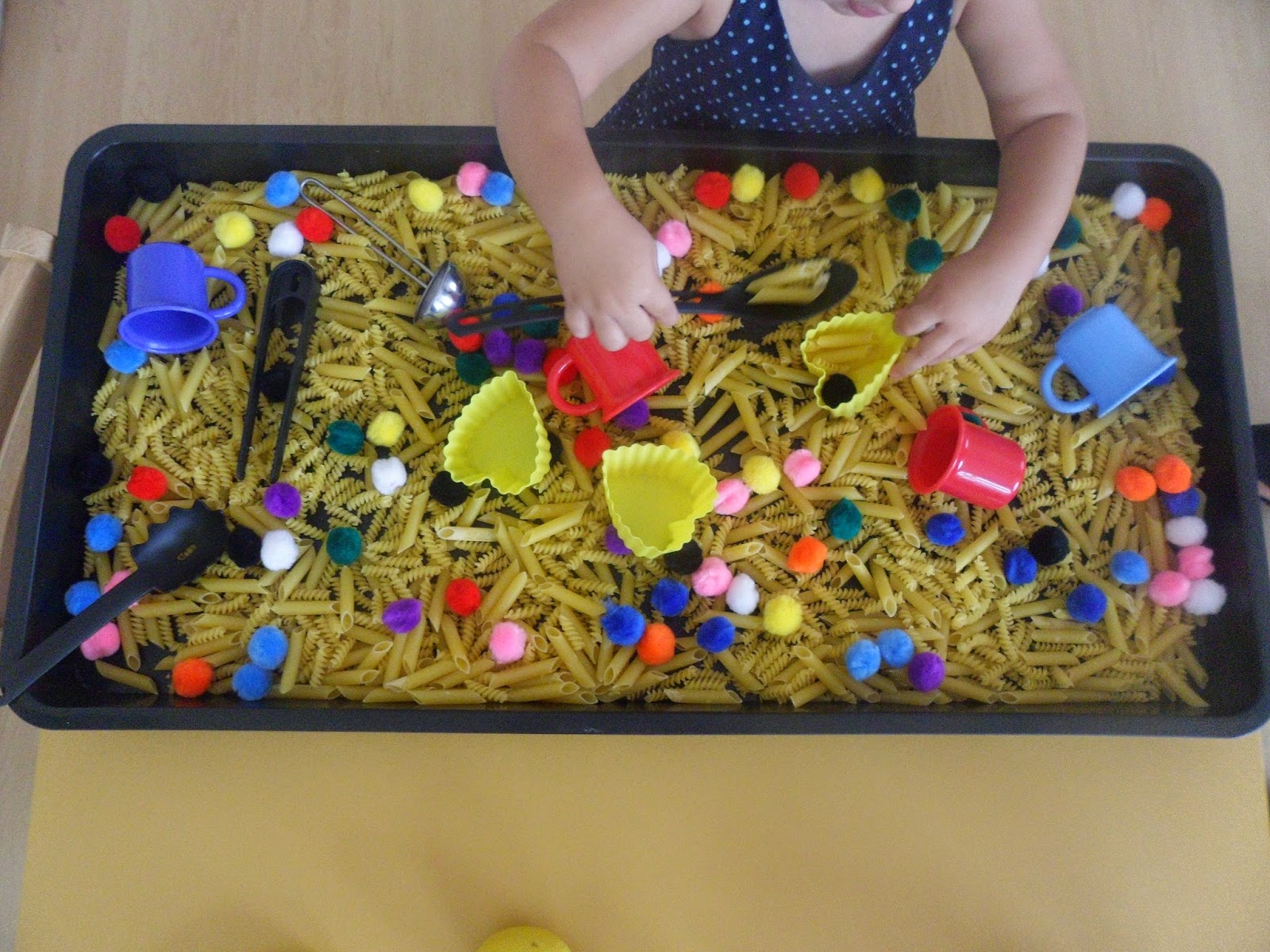In this day and age, the variety of toys and games available for children is staggering. If you are keen on encouraging your child to use more natural resources for their activities, here are some ideas!

1. Growing seeds
This activity encourages us to care about our environment, as well as a whole host of other development areas!
* Fast growing seeds such as fava beans
or watercress
or watercress
* Cotton Wool
* A camera
* Watering can or similar
Method:
Development tips:
2. Pasta Play
This is an all-time favourite of mine and will occupy your little one for ages! Simple, easy, low-cost, natural and effective, what more could you want?
* Dried pasta
* Assorted toys
* Cups, spoons and other measuring and
pouring equipment
pouring equipment
Method:
Development tips:
As an extension, why not ask your child to paint the pasta the day before, they they will have coloured pasta to play with!
3. Shape Printing
An excellent way to develop creativity and learning using everyday household objects!
* Paint
* A3 paper
Method:
Development tips:
4. Lemon Playdough
Why go out and buy playdough when you can make your own and involve your child in the process? Vary the colour, smell and added ingredients to make it different every time!
* 2 tablespoons vegetable oil
* 1/2 cup salt
* 2 tablespoons cream of tartar
* Up to 1.5 cups room temperature water
(adding slowly until you have the
(adding slowly until you have the
desired consistency)
* Food colouring
* Flavouring
* Glitter
* Lemons
* Playdough equipment and utensils
Method:
Development tips:
Making playdough is a great opportunity for your child to start learning that certain items can transform into something else when a certain process is followed (another good example of this is making ice cubes). It also develops their understanding of processes and following a sequence. While making it, you can discuss colours, smells, texture and anything else that pops into your head! Kneading the dough also helps develop fine motor skills. Being a part of this process allows your child to feel ownership for something they created, which links to their personal, social and emotional development. Afterwards, it can be used in endless ways to develop their imagination, fine motor and creative skills.
Eco-friendly toys
If you want to be environmentally aware and still get your little one a treat, here are some things to look out for:
* Go for the toys that are made from
natural materials such as wood
* Most packaging will state if the toy
has been made with materials from
sustainable sources
* If you are going to go plastic, look out for toys made from recycled plastic, a winner in my books!
* Check if the paint, or other materials
used are non-toxic
used are non-toxic
And lastly....
Try and recycle as much as possible - at our nursery we ask parents to bring in all their old junk, empty cereal boxes, bits of material, cardboard boxes of all shapes and sizes.....the list is endless! These things that you were going to throw away can be given a new lease of life as important props in the 'shop', a telephone for the 'clinic', a spaceship, a princess's dress....I could go on forever! Children have fantastic imaginations, why not encourage that and be eco-friendly in the process?
For more information and ideas, check out our Facebook page
In my next post, I will give you some handy hints on preparing your child (and yourself!) for nursery....see you soon!
manages an EYFS nursery. She has a special interest
in psychology and early childhood development.


























